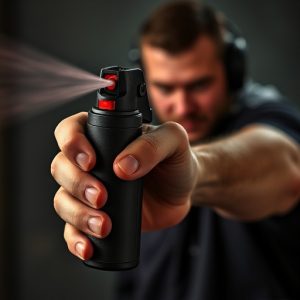Tactical Pepper Spray: Effective Deployment & Safety Tips
Tactical pepper spray, or OC spray, is a potent self-defense tool that temporarily neutralizes attac…….
Tactical pepper spray, or OC spray, is a potent self-defense tool that temporarily neutralizes attackers by targeting their face, eyes, and respiratory system. Effective deployment methods include hand-held canisters, on-body holsters, and vest systems, used during imminent threats to create distance from aggressors. Training in aim, range, wind conditions, de-escalation tactics, and clear decision-making under pressure is crucial for safe and maximally effective use, minimizing self-harm and bystander exposure while ensuring personal safety in dynamic situations. Regular checking of expiration dates and storage conditions are best practices for reliable performance.
“Personal protection has never been more crucial in today’s uncertain world. Among various tools, tactical pepper spray stands out as an effective inflammatory agent for self-defense. This article guides you through the essentials of tactical pepper spray, focusing on its deployment methods. We’ll explore when and how to use it optimally, ensuring your safety with best practices for personal protection. Dive into this comprehensive overview, especially highlighting key aspects of tactical pepper spray deployment methods.”
- Understanding Tactical Pepper Spray: The Basics
- Deployment Methods: When and How to Use It
- Safety and Effectiveness: Best Practices for Personal Protection
Understanding Tactical Pepper Spray: The Basics
Tactical Pepper Spray, also known as oleoresin capsicum (OC) spray, is a powerful personal protection tool designed to incapacitate an attacker temporarily. Understanding its deployment methods is key to maximizing its effectiveness in self-defense scenarios. The most common deployment method involves aiming and spraying directly into the attacker’s face, eyes, and respiratory system. This direct approach ensures maximum exposure to the highly irritant substance, leading to temporary blindness, coughing, and difficulty breathing, giving the user precious time to escape or summon help.
OC spray is typically delivered in canisters that use a variety of activation mechanisms, including pull-tab, thumb-activated, and electric triggers. The choice of deployment method often depends on personal preference and training. Proper training is essential as it teaches users how to effectively deploy the spray while minimizing exposure to themselves and bystanders. Knowing when and how to use tactical pepper spray can significantly enhance an individual’s ability to defend themselves in potentially dangerous situations.
Deployment Methods: When and How to Use It
When it comes to tactical pepper spray deployment methods, timing and technique are crucial for effective personal protection. The best time to use a tactical pepper spray is when facing an imminent threat or during close-quarters engagements. It can create enough disorientation and pain to gain distance from an attacker, allowing for escape or the opportunity to call for help.
The most common deployment methods include hand-held canisters, on-body holsters, and even integrated tactical vest systems. Hand-held canisters are versatile and easy to use, with a simple trigger mechanism that allows users to aim and spray accurately at close range. On-body holsters provide quick access during dynamic situations, while tactical vests offer both protection and ease of carry for longer-lasting usage. Understanding the specific deployment method and practicing its use is essential for maximizing the effectiveness of tactical pepper spray in high-stress scenarios.
Safety and Effectiveness: Best Practices for Personal Protection
When it comes to safety and effectiveness, understanding the tactical pepper spray deployment methods is paramount. Personal protection sprays are designed to incapacitate an attacker temporarily, giving users time to escape or defend themselves. However, their potency necessitates responsible use. Proper training in deployment techniques, including aim, range, and wind conditions, ensures maximum effectiveness while minimizing risk to bystanders and self-harm.
Best practices involve practicing realistic scenarios, understanding de-escalation tactics, and keeping a clear head under pressure. Using the spray as a last resort when all other options have failed is crucial. Regular maintenance of the device, including checking expiration dates and ensuring proper storage, is equally important to guarantee its reliability in critical situations.
Tactical pepper spray, when used correctly, can be a game-changer in personal protection scenarios. Understanding the various deployment methods and best practices outlined in this article is crucial for ensuring its effectiveness. By familiarizing yourself with different application techniques and safety measures, you’ll be better equipped to navigate potential threats. Remember, proper training and adherence to guidelines are key when considering tactical pepper spray as a personal defense tool.


